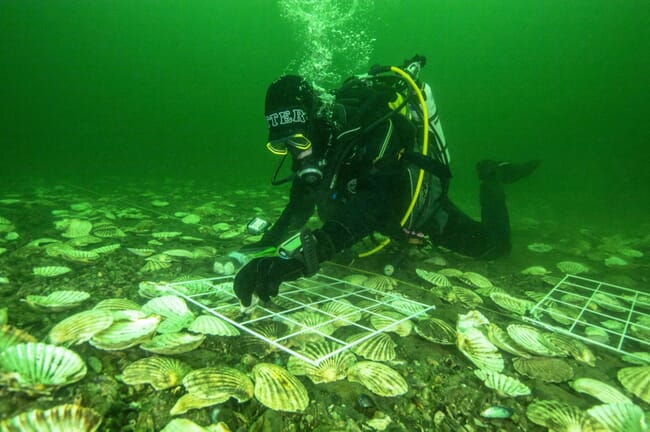
© DEEP
Extensive knowledge on how to restore native European oyster habitats will be published in a landmark special issue of Aquatic Conservation: Marine and Freshwater Ecosystems.
The ground-breaking compendium of articles detail, more than any publication before, the value that shellfish habitats bring to society, how to deal with oyster diseases, and the financing solutions required to restore native oysters to seas throughout Europe.
The findings originate from the global meeting of the Native Oyster Restoration Alliance (NORA), which was held in Edinburgh in May 2019 and hosted in partnership between The Glenmorangie Company, Heriot-Watt University, The Marine Conservation Society, Nature Scot and Scottish Enterprise.
Marine scientists, conservationists, administrators and oyster producers from across Europe gathered to unlock the blueprint for oyster restoration. Plans across Europe will see millions of native oysters (Ostrea edulis) returned to the seas around France, Germany, Ireland, the Netherlands, Belgium, Italy, UK and Spain, where many populations were wiped out by overfishing as long as a century ago.
This special issue will be released this week ahead of the launch of the UN Decade on Ecosystem Restoration, beginning in 2021, which aims to give a sharp focus to ecosystem restoration, ‘mainstreaming’ it into policy and planning.
Dr Bill Sanderson, MASTS reader in marine biodiversity at Heriot-Watt, co-authored several research articles in the issue and was the scientific chair for the global meeting held at The Royal Society of Edinburgh. Speaking of the publication, he said: “This volume is a milestone for marine environmental restoration, containing state-of-the-art scientific evidence of, for example, the value of shellfish habitats to society; whether it’s their ability to store carbon, filter large volumes of seawater, or create habitats that are biodiversity hotspots.”
Dr Philine zu Ermgassen, from the secretariat for the pan-European NORA, who also led the authorship on key articles, noted: “The publication shows the way forward and identifies the top 40 most important questions that need to be answered to make oyster restoration a reality across its former range.”
Professor John Baxter, lead editor, added: “From predicting the dispersal of larval from restoration sites, dealing with oyster diseases or financing solutions, this compendium of scientific articles is a very significant moment that will propel restoration activities across Europe.”
Dr Peter Nelson, operations director of The Glenmorangie Company, commented: “We are incredibly proud to be helping to pioneer this vital environmental work with our partners and NORA, it is all part of our strategy, through our DEEP project, to protect and enhance the environment at the Glenmorangie Distillery on the Dornoch Firth, as part of making the distillery sustainable for future generations.”


